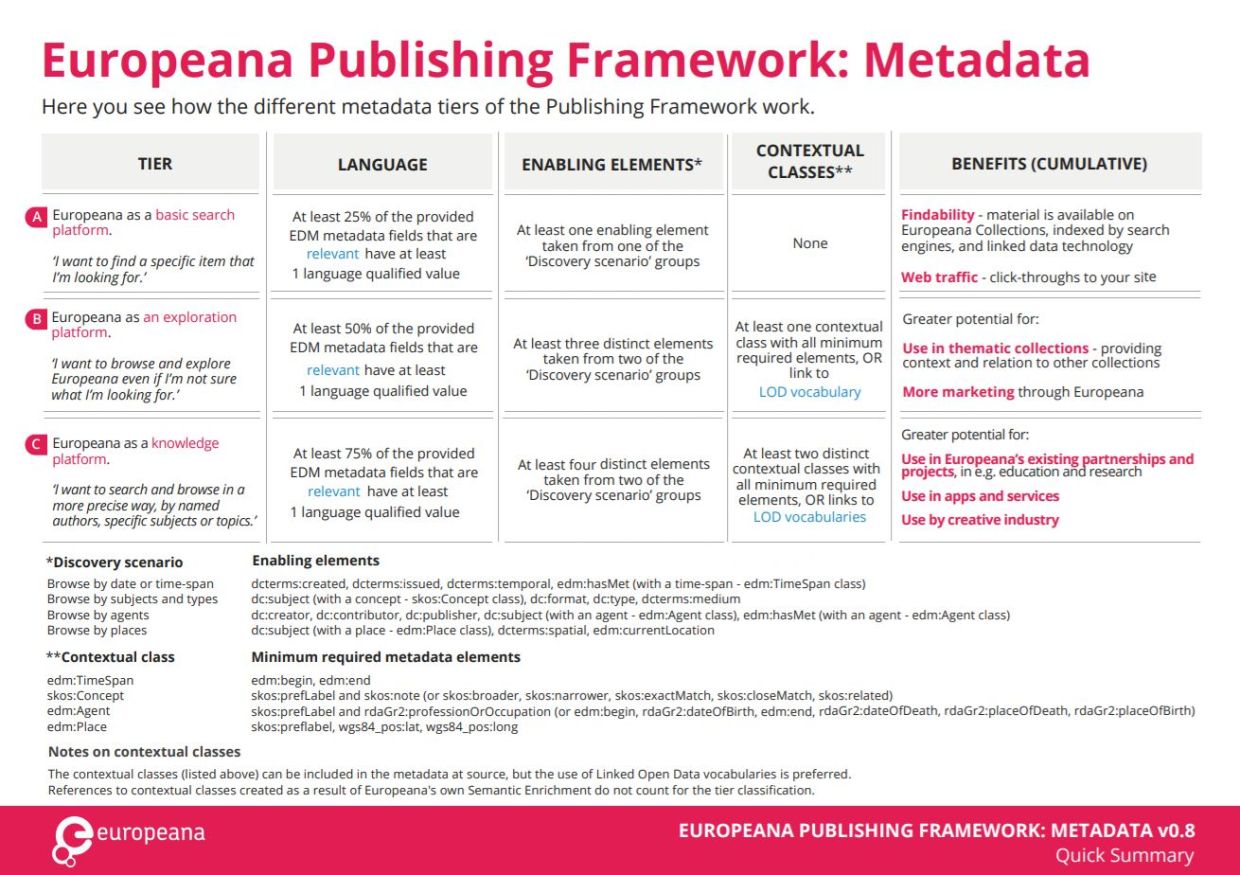A team effort
The Europeana Foundation worked with aggregators and the Data Quality Committee (a Europeana Network Association and EuropeanaTech Working Group) to develop the ideas behind the metadata component of the Framework.
Implementing the Framework meant even more teamwork - various teams from the Europeana Foundation were involved in changing the Europeana Data Model so that the various ‘tiers’ could be represented in the data, in making sure that our in-house data processing system, Metis, could process and calculate the new tiers and lastly in making sure our API could publish the tiers data.
Defining metadata quality
Identifying what metadata quality meant in the context of Europeana was an exercise of great significance for us.
First of all, we wanted to know what difference better metadata makes to the people who use Europeana Collections. This resulted in a series of usage scenarios that showed us a range of ways people search for and retrieve information. These scenarios were based on ‘personas’ (example people with specific needs and backgrounds) that had been developed by the Europeana Foundation to help guide the design process for Europeana’s products. These personas and scenarios provide us with information about who uses Europeana Collections, why and how, so that we (with the Data Quality Committee) could develop a Framework that connected metadata quality with a better user experience.
Next, we needed to look at how to define our quality requirements in a clear way so that institutions sharing collections with Europeana could provide the appropriate metadata.
A lot of discussions took place around making more metadata elements mandatory for all records. The conclusion was that mandatoriness does not always entail good data quality: the required elements are not necessarily in the source metadata, and so incorrect or duplicate information may be added with a view to fulfilling the criteria rather than with a view to enhancing experience.
Instead, the DQC agreed on two new ways of categorising the current metadata elements: mandatory elements and enabling elements. Mandatory elements are required as a fundamental minimum for all metadata descriptions. Enabling elements are desirable but optional - including them supports functionalities for a specific set of usage scenarios. The enabling elements are now a key component of the metadata tiers.
Metadata Quality Tiers
The metadata tiers components are based on three criteria: language, enabling elements and contextual classes.
We encourage the use of language tags to show which language is being used, which means that more automatic linking and translation processes can be implemented to develop multilingual services. We also recommend the use of ‘enabling elements’ in the metadata to allow for greater information retrieval and service improvement. And finally, we encourage the inclusion of a range of contextual information such as place names, dates and subjects either as metadata elements or as links to contextual vocabularies that will also improve the findability and accuracy of objects in Europeana.
The more language information, enabling elements and context is provided, the higher up the tiers you go. Higher tiers provide more benefits and more potential for your collections to be found, promoted and reused.





